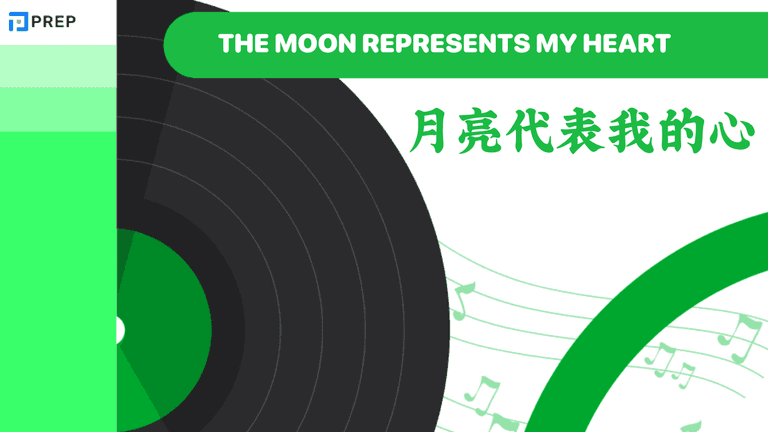Li in Chinese: The Ultimate Guide to the Surname 李, Its Meanings, and Homophones
The sound li in Chinese opens a fascinating window into one of the world's most complex and beautiful writing systems. Whether you're researching the most common surname on Earth, learning Mandarin pronunciation, or simply curious about Chinese culture, understanding "li in Chinese" reveals layers of meaning that extend far beyond a simple sound. This comprehensive guide explores the surname 李 (Lǐ), its historical significance, and the rich tapestry of homophones that share this pronunciation in modern Mandarin.
I. What is Li in Chinese: The Definitive Answer
When most people ask about "li in Chinese," they're typically referring to the surname 李 (Lǐ), which literally translates to "plum tree." This character represents the most common family name in the world, shared by over 100 million people globally. The significance of this name extends far beyond its botanical meaning, encompassing centuries of Chinese history, culture, and linguistic evolution.
The Primary Meaning: The Surname 李 (Lǐ), or "Plum Tree"
The character 李, li in Chinese, stands as a testament to the deep connection between Chinese culture and nature. Pronounced with the third tone (Lǐ), this surname carries the meaning of "plum tree," reflecting ancient Chinese traditions of naming that often drew inspiration from the natural world. Archaeological evidence suggests that families bearing this name have existed for over 2,500 years, making it not just common but historically significant across multiple dynasties and regions.
Understanding "li means in Chinese" requires grasping a fundamental principle of Mandarin: the same sound can represent dozens of different meanings depending on the specific character and tonal pronunciation.
II. Surname 李 (Lǐ): Story of the World's Most Common Li in Chinese Name
The journey of the surname 李, li in Chinese, from ancient China to global recognition represents one of the most remarkable stories in human nomenclature. This section explores the character's construction, pronunciation, historical development, and modern cultural impact through detailed analysis and expert insight.
1. Understanding Li in Chinese Radicals and Stroke Order
The character 李 demonstrates the logical beauty of Chinese writing through its component parts.
-
The upper portion contains the radical 木 (mù), meaning "tree" or "wood," which provides the semantic foundation for the character's meaning.
-
Below this sits the character 子 (zǐ), originally meaning "child" or "fruit," though in this context it functions more as a phonetic component.
-
Together, these elements create a pictographic representation of a fruit-bearing tree, specifically the plum.
The seven-stroke sequence follows traditional Chinese calligraphy principles: horizontal strokes precede vertical ones, and components are completed from top to bottom. This systematic approach to character construction reflects the underlying order that governs all Chinese writing, making 李, li in Chinese, an excellent example for understanding broader principles of character formation.
2. How to Pronounce the 3rd Tone of Li in Chinese Correctly
Mastering the pronunciation of 李 requires understanding Mandarin's third tone, which follows a distinctive falling-then-rising pitch pattern.
Native speakers often describe this tonal movement as resembling the sound you make when expressing doubt or contemplation—starting at a middle pitch, dropping low, then rising slightly. The entire pronunciation should feel like a gentle scoop, avoiding the common mistake of making it too sharp or abrupt.
The physical sensation involves relaxing the throat during the initial fall, then engaging the vocal cords to create the subtle rise. This tonal precision distinguishes the surname 李 from other li in Chinese, demonstrating why proper pronunciation carries such importance in Chinese communication.
3. Historical Roots of Li in Chinese
The surname 李, li in Chinese, carries profound historical significance that spans over two millennia, connecting ancient philosophy with imperial power. Its legendary origins trace back to Laozi (literally "Old Master"), whose birth name was Li Er and who founded Daoism during the 6th century BCE alongside Confucianism and Buddhism as one of China's three major philosophical traditions.
The transformation of li in chinese name from philosophical heritage to widespread adoption occurred during the Tang Dynasty (618-907 CE), marking a pivotal moment in Chinese nomenclature:
-
Imperial Elevation: Emperor Gaozu (Li Yuan) established the Tang Dynasty, instantly elevating the Li surname to unprecedented prominence throughout Chinese society
-
Cultural Association: Bearing the name Li became synonymous with imperial power, cultural refinement, and political influence that persisted for centuries
-
Systematic Promotion: Tang governmental policies actively encouraged ethnic groups and foreign dignitaries to adopt the Li surname when serving the empire
-
Geographic Expansion: Military conquests and cultural influence spread the name across East Asia, establishing its dominance in Chinese nomenclature
III. The Four Tones of Li in Chinese
Mandarin Chinese employs four primary tones plus a neutral tone, and each tonal variation of "li" produces distinct meanings and characters.
-
The first tone (lī) creates a high, flat pitch resembling a sustained musical note.
-
The second tone (lí) rises from middle to high pitch, similar to asking a question in English.
-
The third tone (lǐ) follows the falling-then-rising pattern we discussed with the surname.
-
The fourth tone (lì) drops sharply from high to low pitch, creating an assertive, definitive sound.
These tonal distinctions aren't merely pronunciation variations—they fundamentally alter meaning and determine which written character applies. This system allows Chinese to express numerous concepts using the same basic sound structure, creating efficiency in spoken communication while maintaining precision through tonal and contextual cues.
IV. 10 Essential Words with the Character 李 (Lǐ)
While 李,li in Chinese, primarily functions as a surname, this character also appears in various compound words and phrases that extend its utility beyond personal names. These combinations often preserve the original "plum" meaning while creating new semantic relationships that enrich Chinese vocabulary and cultural understanding.
|
Word (Characters) |
Pinyin |
Literal & Figurative Meaning |
Context/Usage Notes |
|
李子 |
lǐzi |
Plum fruit |
Common word for the actual fruit, used in markets and cooking |
|
李树 |
lǐshù |
Plum tree |
Botanical and gardening contexts, distinguishes from the surname |
|
桃李 |
táolǐ |
Peach and plum (students) |
Metaphor for students or disciples, especially in education |
|
李代桃僵 |
lǐ dài táo jiāng |
Sacrifice oneself for another |
Idiom meaning substitution or taking blame for someone else |
|
瓜田李下 |
guā tián lǐ xià |
Melon field, under plum tree |
Idiom warning against compromising situations or appearances |
|
李白 |
Lǐ Bái |
Famous Tang Dynasty poet |
Proper name, but also referenced in literary discussions |
|
行李 |
xínglǐ |
Luggage, baggage |
Common travel term, though etymology differs from plum meaning |
|
李鬼 |
Lǐ Guǐ |
Imposter, fake |
From classical literature, refers to someone pretending to be another |
|
张三李四 |
Zhāng Sān Lǐ Sì |
Tom, Dick, and Harry |
Expression meaning "any random person" or "so-and-so" |
|
投桃报李 |
tóu táo bào lǐ |
Return favor for favor |
Idiom expressing reciprocal kindness or mutual benefit |
These compound words demonstrate how the character 李 extends beyond simple surname usage into rich cultural and linguistic territory. The idioms particularly showcase Chinese wisdom traditions that use fruit imagery to convey complex social and moral concepts.
V. Common Questions About the Name "Li" in a Global Context
Understanding "li in Chinese character" within international contexts reveals fascinating connections across cultures and languages, while also highlighting important distinctions that affect identity and communication in our globalized world.
1. Does the English spelling "Lee" always refer to the Chinese name Li?
No, the English spelling "Lee" represents multiple distinct surname traditions that developed independently across different cultures and historical periods. While "Lee" serves as a common romanization for the Chinese surname 李 (particularly in Cantonese-speaking regions where it's pronounced closer to "Lee"), it also represents a completely separate English surname with Anglo-Saxon origins meaning "meadow" or "clearing."
2. What is a "radical" and how does it give meaning to a character like 李?
A radical functions as a fundamental component of Chinese characters that traditionally serves two primary purposes: dictionary organization and semantic classification. In the character 李, the radical 木 (mù) meaning "tree" or "wood" provides a semantic clue that connects the character to botanical or natural concepts, helping readers understand its relationship to plant life even without knowing the specific meaning.
3. What common themes or concepts appear in words that use the character 理 (lǐ)?
The character 理 (lǐ) consistently relates to abstract concepts of order, logic, reasoning, and systematic thinking across its various applications in modern Chinese. Words containing this character typically involve intellectual processes, organizational structures, or principles that govern behavior and understanding.
Examples include:
-
道理 (dàolǐ) meaning "reasoning" or "sense"
-
管理 (guǎnlǐ) meaning "to manage" or "administration"
-
物理 (wùlǐ) meaning "physics" (literally "the principles of things")
-
心理 (xīnlǐ) meaning "psychology" (literally "principles of the mind").
This thematic consistency demonstrates how Chinese character components contribute to semantic networks that help organize and understand complex vocabulary systems.
VI. Conclusion
The exploration of "li in Chinese" reveals remarkable depth beneath seemingly simple sounds in the Chinese language. From the ancient surname 李 (Lǐ) with its 2,500-year history to diverse homophones enriching modern Mandarin, this pronunciation encompasses botanical meanings, imperial heritage, philosophical traditions, and practical communication that demonstrate why Chinese writing has endured for millennia while continuing to evolve and adapt.

Hi I'm Chloe, and I am currently serving as an Product Content Administrator at Prep Education. With over five years of experience in independent online IELTS study and exam preparation, I am confident in my ability to support learners in achieving their highest possible scores.
Comment
Premium content
View allPersonalized roadmap
Most read












